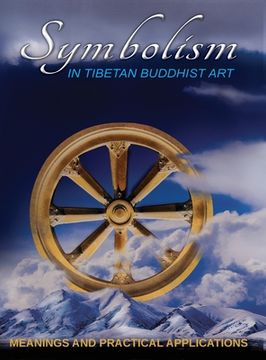Compartir
Symbolism in Tibetan Buddist Art: Meanings and Practical Applications (en Inglés)
David C. Huber
(Autor)
·
Dave Glantz
(Autor)
·
Baronet 4 Tibet
· Tapa Dura
Symbolism in Tibetan Buddist Art: Meanings and Practical Applications (en Inglés) - Huber, David C. ; Glantz, Dave
S/ 139,89
S/ 279,79
Ahorras: S/ 139,89
Elige la lista en la que quieres agregar tu producto o crea una nueva lista
✓ Producto agregado correctamente a la lista de deseos.
Ir a Mis Listas
Origen: Estados Unidos
(Costos de importación incluídos en el precio)
Se enviará desde nuestra bodega entre el
Martes 18 de Junio y el
Martes 02 de Julio.
Lo recibirás en cualquier lugar de Perú entre 2 y 5 días hábiles luego del envío.
Reseña del libro "Symbolism in Tibetan Buddist Art: Meanings and Practical Applications (en Inglés)"
The book, by using the actual full color art work painted by the Tibetan monks spanning a period of 600 years adds context and aids in the conceptualization of Buddhist philosophy. The art work symbols and the adjoining symbols provides an artistic progression of the philosophy, demonstrating the flow of thought that line drawings of a single symbol cannot provide. The book provides in depth explanations of symbols, using the ancient scriptures and Buddha's own teachings. It examines the Sanskrit words behind many of the symbols and what those words actually mean. As an example it looks at the Four-petaled Flower, the Sanskrit word dukkha, representing the Four Noble Truths that leads to the Dharma Wheel and the Eightfold Noble Path and the Sanskrit word samma that is integral to understanding that path. Over the centuries these symbols have evolved in their depictions to include, through art, the natural progression of the philosophical concepts.Another of the strengths of the book is that the full color images are presented on the same page(s) as the conceptual explanations. This makes it much easier to understand and assimilate, no page turning required. There is also an index provided for the researcher to use in going deeper into the various components of the symbolism.The book, by using Tibetan monks, lamas, geshes, in addition to Tibetan scholars at universities through out Tibet as the source for the information we have stayed true to the intended meaning and context of the symbols. There are some misconceptions about some symbols as to what they are and what they mean presented by other books on the subject. By using learned Tibetans inside of Tibet and at the monasteries that produce the art work in Tibet we have stayed true to the identification, thought process and conceptualization of the symbols.
- 0% (0)
- 0% (0)
- 0% (0)
- 0% (0)
- 0% (0)
Todos los libros de nuestro catálogo son Originales.
El libro está escrito en Inglés.
La encuadernación de esta edición es Tapa Dura.
✓ Producto agregado correctamente al carro, Ir a Pagar.

